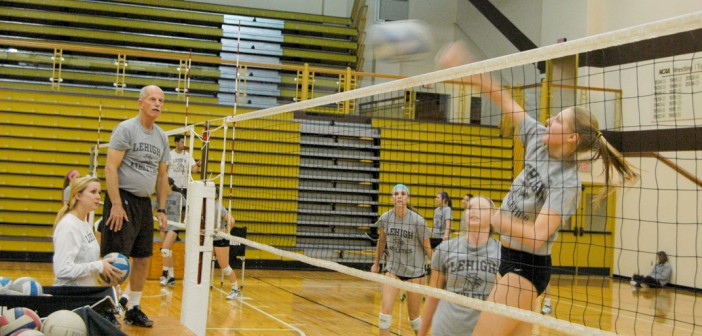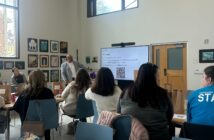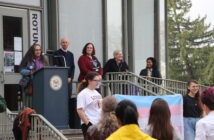As a Division I school, Lehigh typically recruits prospective student athletes with scholarships in mind. However, unlike many other Division I athletic programs, the awarding of athletic aid — and the ways in which student athletes can retain that aid after leaving their sport — is different.
Chris Wakely, the associate director of athletics, said the department as a whole rejects the term “scholarship” when referring to monetary awards for student athletes.
“The mission of the department is to develop the individual holistically,” Wakely said. “We refer to the awards as scholar-athlete aid because as much of the award is academic and character as it is athletic.”
Coaching staffs for different teams travel across the country to find exceptional athletes who will contribute to the Lehigh community at large.
Eric Lambinus, the Lehigh women’s soccer head coach, said the elements they consider during the recruitment process are what the prospective student athlete is going to bring to the team, to Lehigh and to the athletics department.
Once coaches have found prospective student athletes at the end of the recruiting season, they make recommendations to the athletic department regarding an award amount. These suggestions are based on the value the coach believes the player would contribute to the program as well as to Lehigh.
The Scholar-Athlete Aid Committee, led by Dean of Athletics Joe Sterrett, makes the final decision regarding the amount of scholar-athlete aid an admitted athlete will receive. The committee is comprised of representatives from the athletic department as well as the Office of Admissions.
The amount of scholar-athlete aid ranges from partial to full awards depending on the athletic team and standards set out by the NCAA and the Patriot League.
“Women’s soccer can have 14 (players receive) scholar-athlete aid,” Lambinus said. “Men’s soccer can have 9.9.”
The difference between the numbers of awards given to teams may differ, but there is a wide range of players across teams receiving different forms of aid from the university.
“Our teams are pretty close to maybe what a regular class would be,” Lambinus said. “We have a certain percentage, maybe between 50-75 percent, that would have an athletic aid.”
The scholar-athlete aid amount is considered a four-year commitment to the students and families by the athletic department. The award is renewed each year and student athletes have to maintain certain standards in order to continue to receive the award.
“When we make an offer of athletic scholarship, (student athletes) can’t lose it based on injury,” Lambinus said.
The only way student athletes can lose their award is if they become injured outside the realm of sports. Since the injury did not occur in a sports setting, the coaching staff and the athletics department have the right to pull the award.
If a player does suffer a sports-related injury, his or her athletic award cannot be retracted due to injury. Instead, players have to find another role in their respective programs in order to contribute to the success of the team.
“We want to try to make it work for everybody,” said Sue Troyan, the head coach for the Lehigh women’s basketball team.
Whether it’s serving as a team manager, taking stats at a game or running parts of practice, injured players still play a contributing role to their sports teams.
Lambinus said quitting the team is always different because it’s the player’s choice. He said by not participating in the program, the player gives up his or her right to receive the award.
Student athletes may decide to leave programs for a number of reasons. Whether physical or academic, students have to make the choice of whether the responsibilities of being on a Division I team work with their academic and professional careers.
“I think the hard part is that when there are financial incentives tied to (leaving the team), it influences their decision,” Lambinus said.
There have been special cases where athletes no longer participate in a sport, yet are able to maintain some of their scholar-athlete aid. Troyan said her team’s manager is a former volleyball player, which serves as something similar to a work study for her scholarship.
Like the women’s basketball team manager, junior Kianna Carroll was a member of the volleyball team and now works for the men’s soccer team. Carroll works approximately 15 hours per week in the sports office in order to maintain her award.
During the season, she goes to the games and helps out keeping statistics. Out of season, Carroll is responsible for managing and maintaining recruitment databases and the social media platforms for the team.
“I’m grateful for the opportunity, and I learned a lot being a division one athlete for the two years that I did it,” Carroll said.
The number of players receiving scholar-athlete aid that end up leaving the athletic department is relatively small across all programs.
“I’ve been here a long time,” Troyan said. “My husband is the softball coach, and he’s never had a player leave his program either, and I think part of that is stability of programs and stability of coaching staffs.”






Comment policy
Comments posted to The Brown and White website are reviewed by a moderator before being approved. Incendiary speech or harassing language, including comments targeted at individuals, may be deemed unacceptable and not published. Spam and other soliciting will also be declined.
The Brown and White also reserves the right to not publish entirely anonymous comments.